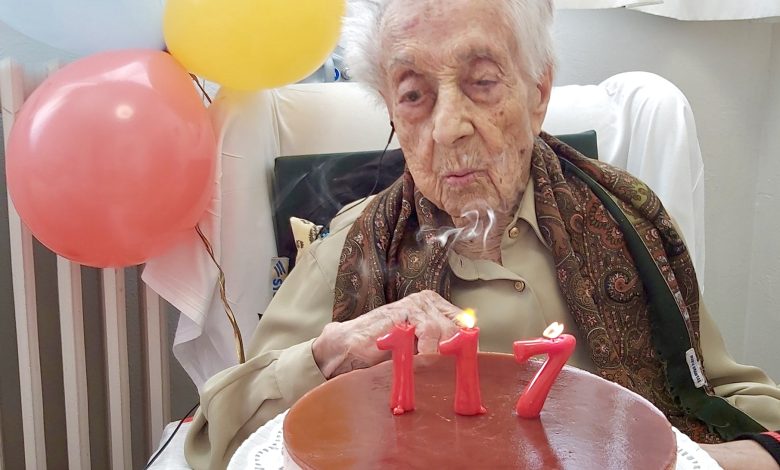World’s Oldest Woman’s Genes Might Hold the Secret to a Longer Life

What if the fountain of youth wasn’t a myth but a string of letters tucked inside our DNA? When scientists study the genes of people who reach extreme old age — centenarians and supercentenarians — they often find patterns that point to biological systems working differently, not magic. The recent focus on the world’s oldest women has given researchers an especially fertile field for investigation: they live longer, often remain healthier into advanced age, and in some cases carry genetic variations that seem to protect against the diseases that typically shorten life. While genes alone don’t explain everything about longevity, studying these exceptional individuals can reveal biological pathways that may one day help more people live longer, healthier lives.
What researchers are learning from the genes of the world’s oldest women, why female longevity matters, the main genetic suspects, how genes interact with lifestyle, and what the future of longevity research may look like — carefully, clearly and without hype.
Why study the world’s oldest women?
Women generally outlive men in most countries. The reasons are complex: combinations of biology, behaviour, and social factors all play a part. Studying the oldest women helps scientists focus on genetic and molecular features that could explain resistance to age-related disease. Women who reach extreme age often display a pattern of delayed onset for conditions such as heart disease, cancer, dementia and type 2 diabetes. If those delays are partly genetic, understanding them could point to mechanisms that promote health across the lifespan.
There’s also scientific value in the extreme: people at the far end of the ageing distribution are more likely to carry rare protective variants or beneficial combinations of common variants. In evolutionary terms, such alleles may be rare in the population but enriched among centenarians. Sequencing and comparing genomes of supercentenarians lets researchers spot differences harder to detect in ordinary samples.
Finally, many very old women have exceptionally long-lived families, which provides an opportunity to disentangle inherited genetic contributions from individual lifestyle choices and environment.
What have researchers found so far?
While no single “longevity gene” guarantees a century of life, a number of genetic pathways recur in longevity studies. Several are of particular interest when comparing the genomes of exceptionally long-lived women to average-age controls:
- Genes involved in DNA repair and genome maintenance. Good DNA maintenance seems to matter. Variants that enhance the efficiency of DNA repair, or of removing damaged molecules, can protect cells from the accumulation of mutations and dysfunctional proteins that drive ageing. Improved DNA repair reduces the risk of cancer and other age-related dysfunctions.
- Genes regulating inflammation and immunity. Chronic, low-grade inflammation — sometimes called “inflammaging” — is a hallmark of ageing and a driver of many diseases. Variants that dampen harmful inflammatory pathways, or that enhance immune resilience, appear more often in long-lived individuals. That helps the body respond to infection without generating excessive tissue-damaging inflammation.
- Lipid metabolism and cardiovascular protection. Genes influencing cholesterol transport and blood vessel health — for instance those that affect HDL function or lipoprotein processing — often show up in longevity research. Some variants correlate with a lower lifetime risk of cardiovascular disease, a major cause of death in mid-to-late life.
- Insulin/IGF-1 signalling and metabolic regulation. Conserved across species, pathways controlling insulin and insulin-like growth factor signalling influence lifespan in worms, flies, mice and possibly humans. Subtle changes that keep metabolic signalling in a healthier state may delay age-related decline.
- Mitochondrial function and energy metabolism. Mitochondria generate cellular energy and also produce reactive by-products. Variants that maintain mitochondrial efficiency and reduce damaging by-products can support healthier cells for longer.
- Telomere biology and chromosome stability. Telomeres — protective caps at the ends of chromosomes — shorten as cells divide. Some studies find links between telomere maintenance and longevity, though this area is complex and influenced strongly by lifestyle and stress.
- Genes linked to neuroprotection. Resistance to neurodegenerative diseases is a common feature among exceptionally old people who remain cognitively intact. Genetic variants that reduce the risk for Alzheimer’s disease and other dementias (or modulate pathways involved in protein aggregation and clearance) are therefore of interest.
No single variant explains extreme longevity on its own. Instead, researchers are starting to see longevity as the net effect of many small genetic advantages acting together with favourable lifestyle and environmental exposures.
Female-specific insights
Some genetic effects may interact with sex-specific biology. For example, hormonal differences across the life course (oestrogen exposure, menopause timing) intersect with cardiovascular and metabolic risks. Variants that influence how a woman’s body responds to hormonal change might therefore shape her risk profile late in life.
In addition, X-chromosome genetics, mitochondrial DNA (which is maternally inherited), and sex-specific patterns of gene expression can all create differences that are worth studying in female cohorts. Mitochondrial efficiency, in particular, has been proposed as a factor in female longevity since mitochondria are passed down the maternal line — a potential reason why longevity might cluster in families through women.
The role of epigenetics and gene expression
Genes are not destiny. Epigenetics — chemical tags that regulate how genes are expressed — plays a central role in ageing. Patterns of DNA methylation, histone modification and chromatin structure change as we age, and they differ between people who age healthily and those who do not. Researchers can now measure so-called “epigenetic clocks” that predict biological age from DNA methylation patterns. Many supercentenarians show epigenetic profiles indicative of a younger biological age than their chronological age.
Gene expression differences (which genes are turned on or off in particular tissues) also matter. Cells that maintain proteostasis (the balance of protein production and removal), effective stress responses, and efficient cellular cleaning processes (autophagy) tend to function better with age.
Lifestyle still matters — and interacts with genes
It’s important to emphasise that genetics provides part of the picture, not the whole one. Lifestyle factors — diet, physical activity, smoking, alcohol intake, social connections, sleep, stress management — have large effects on health and lifespan. In many cases, genes and lifestyle interact: a protective genetic variant might only confer benefit in a supportive environment, or conversely, healthy behaviours might offset genetic risks.
For example, a gene variant that modestly reduces inflammation could have a much larger benefit if a person also eats an anti-inflammatory diet, stays active and avoids smoking. Similarly, access to healthcare and socioeconomic status shape how genetic risks and protections translate into real-world outcomes.
What studying these women could mean for medicine
The ultimate goal is not to make everybody genetically identical to centenarians — that would be neither feasible nor ethical — but to translate what we learn into interventions that mimic the beneficial effects:
- Drug targets. If a particular pathway (say, improved DNA repair or better mitochondrial resilience) frequently appears in long-lived people, that pathway becomes a promising drug target. Therapies that enhance those functions might slow biological ageing or prevent age-related disease.
- Biomarkers for healthy ageing. Identifying genetic and epigenetic markers that predict resilient ageing could help personalise prevention strategies. Clinicians might one day be able to tell who is at high risk of certain age-related conditions and intervene earlier.
- Lifestyle recommendations tuned to genetics. Understanding how genes modify the benefits of diet, exercise or sleep could lead to more precise lifestyle guidance.
- Gene therapies and epigenetic modulation. Though still nascent, targeted therapies that correct or mimic protective genetic effects — or that reset harmful epigenetic ageing — may become possible. These approaches will face technical and ethical hurdles; safety and equitable access are critical concerns.
Ethical and social considerations
Research into genes of the extremely old raises ethical questions. If we could identify genetic predictors of a long life, how would that information be used? Could it affect insurance, employment or social dynamics? There’s also a risk of genetic determinism — overstating the role of genes and downplaying social determinants of health, such as poverty or access to care.
Equity is another challenge. Most genetic studies to date have focused on populations of European descent. To make findings relevant and just, researchers must include diverse populations so that discoveries benefit everyone and avoid exacerbating health disparities.
Finally, extending healthy lifespan raises philosophical questions: who benefits, how will societies adapt to older populations, and how do we preserve dignity and quality of life? These are policy and social questions that must go hand-in-hand with scientific progress.
Caveats and what we still don’t know
Despite exciting leads, the field has limits. Many reported associations are small and require replication in independent samples. Rare protective variants can be difficult to find and interpret. The complexities of gene–environment interaction mean that a variant that looks beneficial in one context may have different effects in another.
Moreover, longevity research often risks sensational headlines that suggest a “secret” or single explanation; reality is more nuanced. Most scientists agree that longevity is polygenic (involving many genes) and multifactorial (involving environment and behaviour).
Practical takeaways for readers
If you don’t have supercentenarian genes, there are still clear, evidence-backed ways to improve your chances of healthy ageing:
- Stay active. Regular physical activity reduces the risk of cardiovascular disease, diabetes and many other age-related conditions. Strength, balance and aerobic exercises all matter.
- Eat a balanced diet. Diets rich in whole foods, vegetables, legumes, nuts, healthy fats and lean proteins — similar to Mediterranean or plant-forward diets — correlate with better long-term health.
- Avoid smoking and limit harmful alcohol use. These are major, modifiable risk factors for premature ageing and disease.
- Manage stress and prioritise sleep. Chronic stress and poor sleep worsen metabolic and immunological health.
- Stay socially connected and intellectually engaged. Social relationships and cognitive activity both contribute to longer, healthier lives.
- Regular healthcare and prevention. Screening, vaccination, and management of chronic conditions help maintain health across decades.
These steps won’t rewrite your genome, but they do influence how your genes are expressed and how your body ages.
Looking ahead
As sequencing technologies become cheaper and cohorts of long-lived individuals increase, researchers will gain a clearer picture of which genetic variants contribute to exceptional longevity and how they interact with environment and behaviour. Multi-omic approaches — combining genomics, epigenomics, transcriptomics, metabolomics and microbiome data — will paint a richer landscape of ageing biology.
Translation from discovery to therapy will take time, careful trials and ethical oversight. But the promise is that by learning from those who age exceptionally well, we can uncover levers that help the rest of us live healthier lives for longer — not merely adding years, but adding healthy years.
Conclusion
The genes of the world’s oldest women are like nature’s hint book: they don’t contain a single, simple secret, but they highlight pathways that protect cells, quiet inflammation, preserve metabolism and sustain brain function. These insights complement what we already know about healthy living and offer potential targets for future treatments that could slow biological ageing. Until then, the best approach remains practical: adopt evidence-based lifestyle choices, support equitable access to healthcare, and follow research as it translates genetic discoveries into real-world benefits for healthy ageing.
By combining lessons from extraordinary individuals with public-health measures and personalised medicine, we may not discover an immortal code in DNA, but we could very well extend the span of healthy, meaningful life for many more people.




